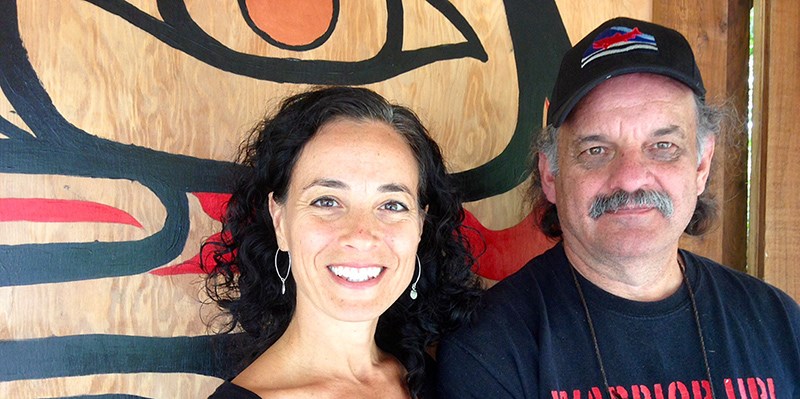This spring, students and staff at Port Moody’s Pleasantside elementary unveiled a new Welcome Post.
The artwork, by Squamish Nation carver Xwalacktun, was the result of months of study about the local First Nations and, in particular, about the ancestral territory their school was built on.
Through the process, Pleasantside students and teachers learned about the Coast Salish ways of the land, art and culture including the seven sacred teachings of Aboriginal education: love, respect, courage, honesty, wisdom, humility and truth.
Those elements are reflected in their new Welcome Post.
But while Port Moody resident and mother-of-two Tasha Faye Evans saw how the children were getting indigenous lessons — prompted by the Truth and Reconciliation Commission's call to action — their parents and other adults were not being offered the same opportunities.
And she wanted to do something about it.
With the help of the Port Moody Ecological Society and SUCCESS — an organization that helps new Canadians — Evans started the Port Moody Welcome Post Project in late June, a five-month exploration of Coast Salish traditions.
Evans recruited First Nations artists and storytellers — people already working in the field of Aboriginal education — to lead free talks and registered workshops.
Last month, the Project officially launched with a feast at Noons Creek hatchery, with Squamish enthobotanist T’uy’tanat-Cease Wyss leading a plant walk along the Shoreline Trail.
That session was followed by a community dialogue about reconciliation with Brandon Gabriel; a cedar weaving workshop; songs with Renae Morriseau and M’Girls; and a youth night.
This Friday, Rueben George will offer a drum-making workshop while, on Aug. 31, Russell Wallace leads Coast Salish drumming and singing event.
Evans said interest in the Welcome Post Project has swelled, with participants travelling as far as Vancouver to attend. At last Thursday’s songs session, for example, about 40 people (including descendants of Chief Dan George, the late chief of the Tsleil-Waututh Nation, of which Port Moody is now on) gathered at Noons Creek to hear the presentation.
“It’s growing,” Evans said, “and many people are coming back for each event. I see they’re hungry to learn more and they want a unique perspective of local history and what it means to be a Canadian.”
She added, “These events are wonderful because it’s bringing people together.”
Listening in is James Harry, the Squamish Nation artist who — starting next month — will begin to carve a Welcome Post based on ideas he’s heard from the Project teachers and participants as well as on collaborations he’s hosting on Sept. 10, 14 and 17.
The old-growth yellow cedar he’s using for the Welcome Post will come from the Squamish Valley — measuring 10 feet long and about five inches thick — and will be carved on both sides to honour the past, present and future of the First Nations in Port Moody.
Evans has been fundraising for the artwork and working with city officials with the aim to raise the finished product on National Aboriginal Day, June 21, 2018, on the east side of Rocky Point Park — at the gateway to the Salish Sea.
Her dream is to create three more welcome posts and place them at other locations sacred to the Tsleil-Waututh: Noons Creek hatchery, near Old Orchard Park and the Flavelle Oceanfront site.
“There needs to be an awakening in this community,” Evans said. “We need to learn about our local history. I believe we all have a role to play.”
• To register for Friday’s drum-making workshop with Rueben George — or to donate to the Welcome Post Project — visit noonscreek.org or email [email protected].



